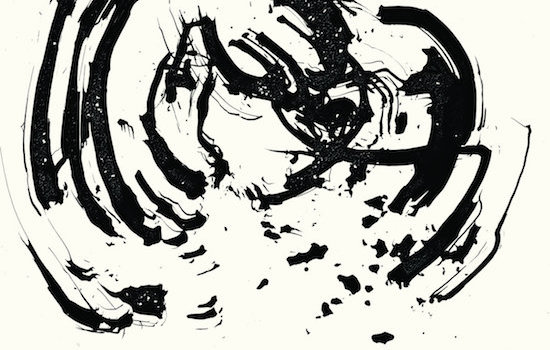Though I spend several hours a day listening to music, it’s rare that I come across a track that forces me to pause whatever else I’m doing and just listen. ‘Fall Into Water’, the second track on Szun Waves’ New Hymn To Freedom, does just that. It’s built around a simple, comforting three-note drone pattern, overlaid with subtle layers of bells, percussion and a restless oscillating synth line, and listening to it feels like staring into a bonfire – that state of being lost in a trance, all the while mindful of the creative and destructive capabilities of the elements.
That elemental sense of escaping by going in deeper runs through the album – a theme you might get from the title and the artwork before you even get to the music. The video for ‘Constellations’ reveals a fixation with patterns, fractals and sacred geometry. Filmmaker Sam Wiehl based the video on the work of Tazelaar Stevenson, whose art “speaks in the fundamental language of nature” according to Szun Waves’ synth player Luke Abbott; Stevenson also designed the album cover, using scratchy calligraphic squirls to represent (says Abbott) “a deep connection with the rhythms of the universe”.
It’s cosmic, no doubt. Szun Waves are a trio – Abbott plus Laurence Pike and Jack Wyllie – very much influenced by jazz and improvisation, who are playing with and listening to each other and working towards something universal and ineffable. But this album is earthly, too. Abbott lives in Norfolk and much of his previous work is inspired by the area; I wonder whether the East Anglian flatlands played a role in shaping the album. In listening to ‘Constellations’, I can well imagine someone lying on their back in a field, searching for familiar signs in the night skies above. A constellation, after all, is a projection of human myths on to celestial bodies, and Szun Waves seem to want to explore the interplay between the swirling possibilities opened up in the space between jazz and electronic music, and the ever-shifting organic structures of the natural world.
There’s also a constant tension between order and chaos on the record, particularly on the track ‘High Szun’, which remains in some kind of perilous balance – it feels like it might unravel at any point, its warbling sax and synth lines suddenly taking flight and disappearing behind the clouds. Pike’s drumming keeps it all together, his flittering ride cymbals and restless toms providing solidity to an otherwise nebulous entity. But then the practice of improvisation – all six of the album’s tracks were made in one take, without any editing or overdubbing – is itself a nebulous thing, playing on this precise tension between order and chaos.
Other balances, other contrasts: Szun Waves operate at the more introspective and ethereal end of the current UK jazz renaissance. London-based acts such as The Comet is Coming, Moses Boyd and Nubya Garcia come armed with an outward-facing energy and a fierce yearning for collectivity; James Holden & The Animal Spirits use jazz and electronics to more euphoric ends; Szun Waves (alongside acts such as Portico Quartet, which saxophonist Jack Wyllie also plays in, and Mammal Hands) seem to be guided by an urge to explore internal universes, and in so doing, examine how the patterns found within our consciousness are also imprinted on the natural world. This is particularly noticeable on ‘Temple’, which is again built around a simple synth foundation, layered with more doleful sax playing. It’s music for dreaming, for solitary walks and moments of reflection.
As to the closing title track, it’s the darkest on the album: high saxophone frequencies peek out of a slightly ominous void punctuated by drum rolls and squelchy, unsteady synths. I’m left wondering what freedom means to these musicians, whether it’s an exhilarating sense of openness and possibility, or a slightly overwhelming and lonely experience that could quickly slip away into nothingness. Of all the tracks, ‘New Hymn to Freedom’ feels the farthest away from Earth, as though the three musicians have boarded a spacecraft and are circumnavigating an uncharted planet, wondering whether or not it is safe to land. It’s a challenging conclusion to a beautifully crafted, exploratory piece of work.


